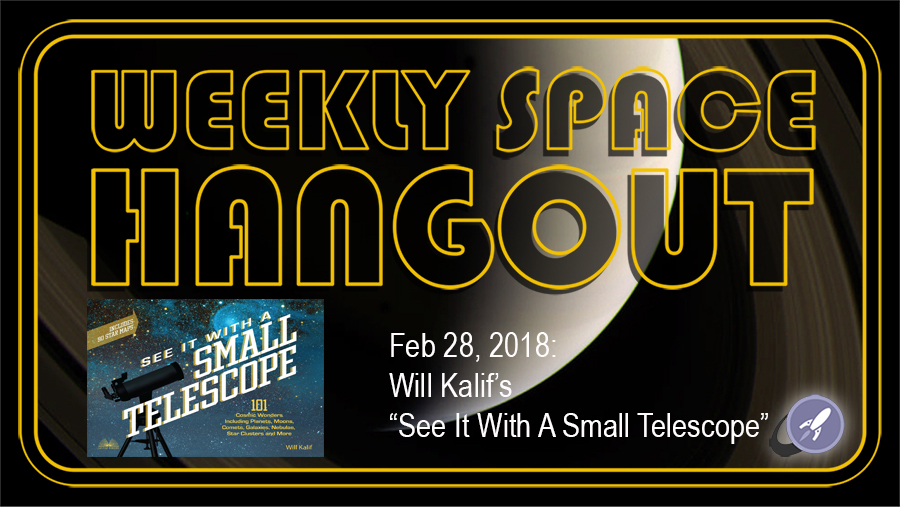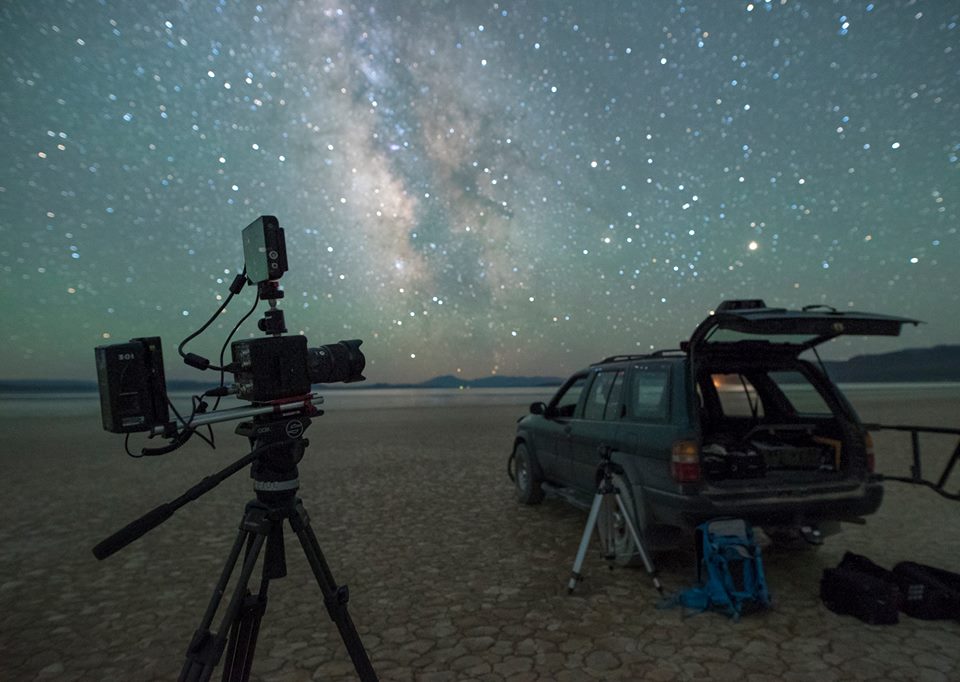If I ask you to picture a radio telescope, you probably imagine a large dish pointing to the sky, or even an array of dish antennas such as the Very Large Array. What you likely don’t imagine is something that resembles a TV dish in your neighbor’s backyard. With modern electronics, it is relatively easy to build your own radio telescope. To understand out how it can be done, check out a recent paper by Jack Phelps.
Continue reading “You Can Build a Home Radio Telescope to Detect Clouds of Hydrogen in the Milky Way”Building a Worldwide Map of Light Pollution
As someone that has always lived in the UK countryside I am no stranger to the glory of a dark star-filled sky. Sadly 60% of the world’s population has already lost access to the night sky thanks to light pollution. Across Europe and the US that number climbs to nearer 80%. A team of researchers want to try and track the growth of light pollution and to that end have developed an inexpensive sensor made from “off-the-shelf” parts. Their hope is that people around the world will build and install these sensors to share their data enabling them to track the spread of light pollution. If you’ve got technical skills, this could be a fun project.
Continue reading “Building a Worldwide Map of Light Pollution”Senseless Vandalism Damages Canadian Observatory

The Royal Astronomical Society of Canada’s observatory in Hamilton, Ontario was vandalized earlier this month, with at least $100,000 in damage to equipment and facilities.
Security video shows two people using a truck to repeatedly ram into two buildings – the observatory and a meeting center — knocking down exterior walls on both buildings and damaging telescopes and other equipment inside. Nothing was stolen, but damaged for no apparent reason.
“It appears to be a failed robbery turned utter vandalism,” said the group’s president Andy Blanchard. “It looked like they wanted to destroy everything.”
Continue reading “Senseless Vandalism Damages Canadian Observatory”Many of the World’s Greatest Observatories Suffer from Some Light Pollution
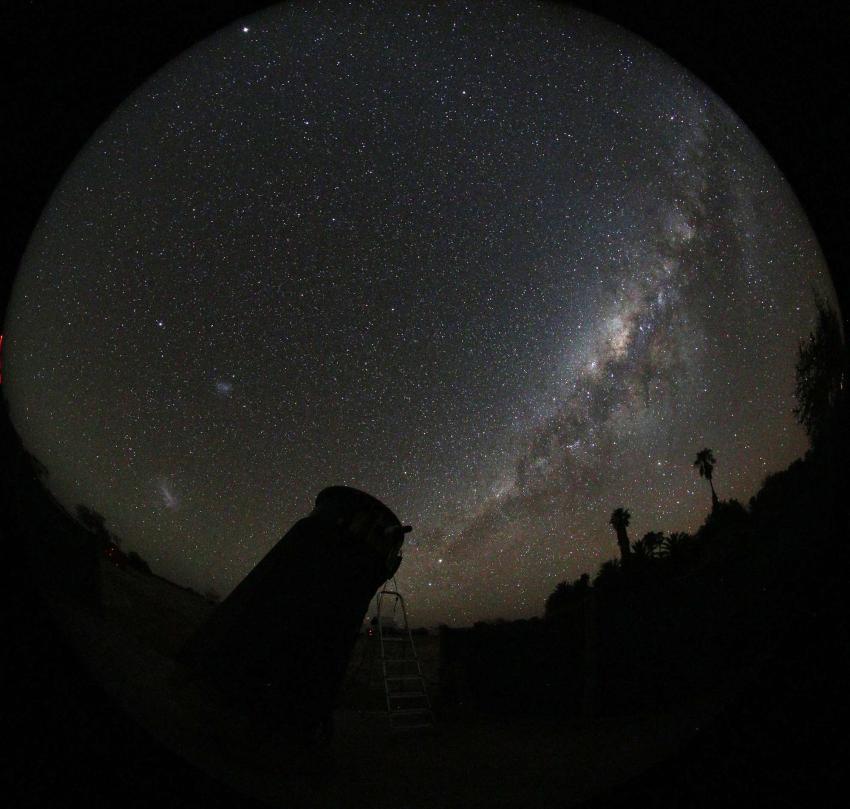
In a recent study published in the Monthly Notices of the Royal Astronomical Society, an international team of researchers examined the levels of light pollution at astronomical observatories from around the world to better understand how artificial light is impacting night sky observations in hopes of taking steps to reduce it. But how important is it to preserve the scientific productivity of astronomical observatories from the dangers of light pollution, as noted in the study’s opening statement?
Continue reading “Many of the World’s Greatest Observatories Suffer from Some Light Pollution”Saturn-sized Planet Found in the Habitable Zone of Another Star. The First Planet Completely Discovered by Amateur Astronomers
Exoplanets have been a particularly hot topic of late. More than 4000 of them have been discovered since the first in 1995. Now one more can potentially be added to the list. This one is orbiting Gliese 3470, a red dwarf star located in the constellation Cancer. What makes this discovery particularly interesting is that this planet wasn’t discovered by any professional astronomers using high tech equipment like the Kepler Space Telescope. It was found entirely by amateurs.
Continue reading “Saturn-sized Planet Found in the Habitable Zone of Another Star. The First Planet Completely Discovered by Amateur Astronomers”Amateur Astronomers Find a Brand New Storm on Jupiter

There’s a new storm brewing on Jupiter. The most famous storm on Jupiter is the Great Red Spot, which has been active since at least the time of Galileo. Most of Jupiter’s storms don’t last for hundreds of years. They grow and fade just as they do on Earth. This latest storm was discovered by amateur astronomer Clyde Foster.
Continue reading “Amateur Astronomers Find a Brand New Storm on Jupiter”Ep. 535: Astronomy-Related Things To Do This Summer
It’s summertime, and time for our annual Astronomy Cast hiatus. But that doesn’t mean that the astronomy adventure has to end. Today we’ll give you some tips and tricks for astronomy summer adventures.
Continue reading “Ep. 535: Astronomy-Related Things To Do This Summer”
Weekly Space Hangout: Feb 28, 2018: Will Kalif’s “See It With A Small Telescope”
Hosts:
Fraser Cain (universetoday.com / @fcain)
Dr. Paul M. Sutter (pmsutter.com / @PaulMattSutter)
Dr. Kimberly Cartier (KimberlyCartier.org / @AstroKimCartier )
Dr. Morgan Rehnberg (MorganRehnberg.com / @MorganRehnberg & ChartYourWorld.org)
Special Guests:
Will Kalif is the author of the new amateur astronomy book titled See it With a Small Telescope.
Announcements:
If you would like to join the Weekly Space Hangout Crew, visit their site here and sign up. They’re a great team who can help you join our online discussions!
We record the Weekly Space Hangout every Wednesday at 5:00 pm Pacific / 8:00 pm Eastern. You can watch us live on Universe Today, or the Weekly Space Hangout YouTube page – Please subscribe!
91 Astronomers Combine 1000 Images Into One Amazing Journey to Jupiter
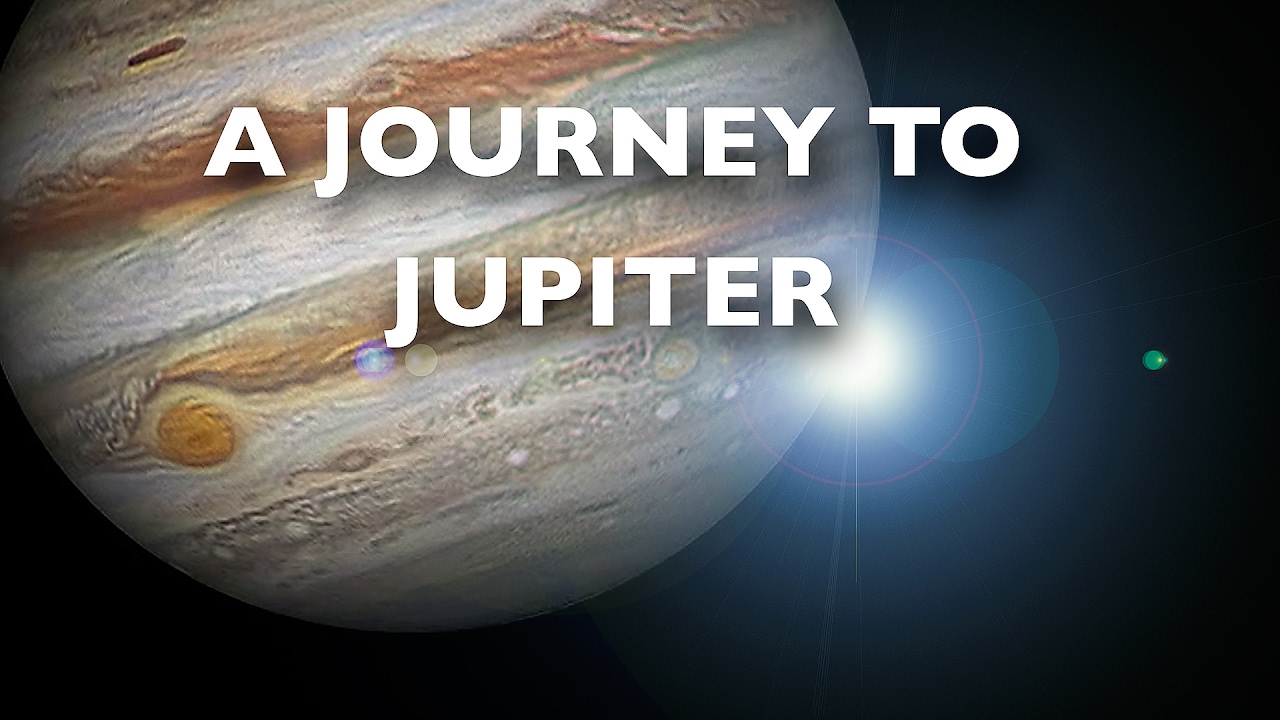
A renewed era of space exploration is underway. Compared to the Space Race of the 20th century, which was characterized by two superpowers locked in a game of “getting there first”, the new era is defined predominantly by cooperation and open participation. One way in which this is evident is the role played by “citizen scientists” and amateur astronomers in exploration missions.
Consider the recently-released short film titled “A Journey to Jupiter” by Peter Rosen – a photographer and digital artist in Stockholm, Sweden. Using over 1000 images taken by amateur planetary photographers from around the world, this film takes viewers on a virtual journey to the Jovian planet, showcasing its weather patterns and dynamic nature in a way that is truly inspiring.
The images that went into making this video were collected by over 91 amateur astronomers over the course of three and a half months (between December 19th, 2014 and March 31st, 2015). After Rosen collected them, he and his associates (Christoffer Svenske and Johan Warell) then spent a year remapping them into cylindrical projections. Rosen then added color corrections, and stitched all the images into a total of 107 maps.
Much like fast-motion videos that illustrate weather patterns on Earth, or the passage of the stars across the night sky, the end result of was a film that shows the motions of Jupiter’s cloud belts and its Great Red Spot in high-resolution. Some 250 revolutions of the planet are illustrated, including from the equatorial band, the south pole, and the north pole.
As Rosen told Universe Today via email, this project was the latest in a lifelong pursuit of making astronomy accessible to the public:
“I have been into Astronomy since I was a teenager in the early 1970’s and immediately I got a passion for astrophotography, and more specifically, photographing the planets. I see astronomy as a life-long passion, so it is quite normal to strive for an evolution in what you do. I had an idea growing slowly for some years that it should be possible to animate the cloud belts of Jupiter and reveal the intricate dynamics of its flows, not just taking still pictures that might point to the changes in the structures but without the obvious visual dynamics of an animation.”
“A Journey to Jupiter” was also Rosen’s contribution to the Mission Juno Pro-Amateur Collaboration Project, of which he is part. Established by Glenn Orton of NASA’s Jet Propulsion Laboratory, this effort is one of several that seeks to connect amateurs and professionals in support of space exploration. Back in May of 2016, this group met in Nice, France, for a workshop dedicated to projects and techniques related to Jupiter observations.

Among other items discussed was the limitations that missions like Juno have to deal with. While it is capable of taking very-high resolution images of Jupiter, these images are highly specific in nature. And before a team of mission scientists are able to color-correct them and stitch them together to create panoramas, etc., they are not always what you might call “visually stunning”.
However, Earth-based observatories are not hampered by this restriction, and can take multiple images of a planet over time that capture it as a whole. And thanks to the availability of sophisticated telescopes and imaging software, amateur astronomers are capable of making important contributions in this regard. And far from these being strictly for scientific purposes, there is also the added benefit of public engagement.
“This has been a very technical and scientifically correct project,” said Rosen, “but as a photographer and digital artist I also wanted to create a work of art that would inspire and appeal to people who are fascinated by the universe but who are not necessarily into astronomy.”
Of course, this does not detract from the scientific value that this film has. For example, it showcases the turbulent nature of Jupiter’s atmosphere in a way that is scientifically accurate. Hence why Ricardo Hueso Alonso – a physicist at the University of Basque Country and a member of the Planetary Virtual Observatory and Laboratory (PVOL) – plans to use the maps to measure Jupiter’s wind speeds at different latitudes.
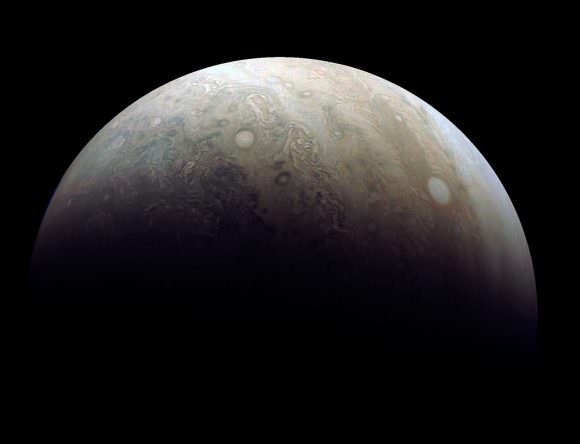
On top of its artistic and scientific merit, “A Journey to Jupiter” also serves as a testament to the skill and capability of the today’s amateur astronomers and planetary photographers. And of course, it draws attention to the efforts of space missions such as Juno, which is currently skimming the clouds of Jupiter to obtain the most comprehensive information about the planet’s atmosphere and magnetic field to date.
Not surprisingly, this is not the first film by Rosen that combines scientific accuracy and fast-motion visuals. The short film Voyager 3, released back in June of 2014, was an homage by Rosen and six other Swedish amateur astronomers to the Voyager 1 mission. As the probe made its 28-day final approach to Jupiter in 1979, it snapped what were the most detailed images of Jupiter at the time.
These images helped to improve our understanding of the gas giant, its atmosphere, and its moons. Among other things, hey revealed the turbulent nature of Jupiter’s atmosphere, and that the Great Red Spot had changed color since the Pioneer 10 and 11 missions had flown by in 1973 and 74. Produced 35 years later, Voyager 3 was an attempt to recreate this historic event using images taken by Swedish amateur astronomers using their own ground-based telescopes.
Over the course of 90 days, Rosen and his colleagues captured one million frames of Jupiter, which resulted in 560 still images of the planet. These were then stitched together using a series of software programs (Winjupos, Photoshop CS6, Fantamorph, and StarryNightPro+) to create a simulation that gives the impression of a probe approaching the planet – i.e. like a third Voyager mission, hence the name of the film.
“As Jupiter was ideally positioned high in the sky in 2013-2014 for us living far up in the northern hemisphere, I decided that it was the right moment to give it a try, so I contacted 6 other amateurs on our local forum that shared my passion for the planets,” Rosen said. “We photographed Jupiter as often as we could during a 3-month period and I took care of the processing of the images which took me a total of 6 months.”
It is an exciting time to be alive. Not only are a greater number of national space agencies taking part in the exploration of the Solar System; but more than ever, citizen scientists, amateurs and members of the general public are able to participate in a way that was never before possible.
To view more work by Peter Rosen, be sure to check out his page at Vimeo.
Further Reading: NASA
At ISO 400,000, This 6-Minute Film Shows Why We Love the Night Sky
Obviously, you’ve seen timelapse videos of the night sky because we share them here on Universe Today all the time. But you’ve probably not seen a video like this one before. This one isn’t a timelapse, and you’ll see the night sky in all its splendor, in real time.
“I think this one may be the beginning of something damn interesting,” said filmmaker Ben Canales, who along with cohort John Waller of Uncage The Soul Productions, shot this video with new low-light technology. Using the new Canon MH20f-SH, which has the capability of shooting at 400,000 ISO, they were able to “film in the quiet moments that have been impossible to capture until now.”
“Since 2013, I’ve been tinkering with all sorts of camera/lens/software combinations trying to move beyond a long exposure still to real time video of the stars,” Canales said on Facebook. “Sooner or later, we have to move beyond a frozen photo of the stars to hear, see, feel what it is really like being out there!”
In addition to showcasing this wonderful new low-light shooting, Infinity² really captures the emotional side of amateur astronomy and the beauty of being under the night sky. He took a group of high school students out to witness the Perseid Meteor Shower in Oregon, and the students got together with the Oregon Star Party. Together, they answer the simple question “What do you feel?”
As Canales says, “Something internal and personal draws us out to the night sky.”
Check out more on Uncage The Soul Productions, Canales’ astrophoto website and Facebook.


Infinity ² from Uncage the Soul Productions on Vimeo.




